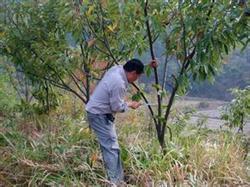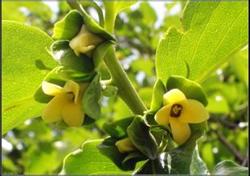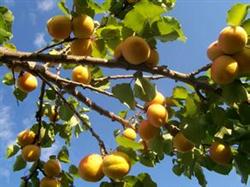Soil testing and Formula fertilization Technology of Chestnut

The main results are as follows: 1. The characteristics of fertilizer requirement: in the annual growth cycle, from the differentiation of male flowers in early spring to flowering and fruit setting, nitrogen was the most, followed by potassium, followed by phosphorus; from flowering to fruit expansion, phosphorus was the most, followed by nitrogen and potassium; from fruit expansion to harvest, potassium was needed the most, followed by nitrogen and phosphorus. In addition to nitrogen, phosphorus and potassium, chestnut trees also need appropriate amounts of calcium, magnesium and trace elements such as manganese, zinc and boron. If the supply is insufficient, poor leaf growth and high empty bract rate will occur. 2. Fertilization technology: under the medium fertility level, the amount of fertilizer applied per mu in the annual growth cycle of chestnut trees is 3000Mel 3500kg of organic fertilizer or 400Mel 450kg of commercial organic fertilizer, 16kg of nitrogen fertilizer, 7kg of phosphate fertilizer and 9kg of potash fertilizer. Organic fertilizer is used as base fertilizer, nitrogen and potassium are divided into base fertilizer and secondary topdressing, all phosphate fertilizer is applied, and chemical fertilizer and farm manure (or commercial organic fertilizer) are mixed. Base fertilizer: the base fertilizer is mainly organic fertilizer, combined with appropriate amount of chemical fertilizer. Farm manure 3000m / mu 3500kg or commercial organic fertilizer 400m / m 450kg, urea 5m / kg 6kg, diammonium phosphate 13m / kg 15kg, potassium sulfate 4m 5kg. Topdressing: topdressing in germination period: 13 kg / mu of urea and 6 kg of potassium sulfate. Topdressing during fruit expansion period: 10 kg per mu of urea and 4 kg of potassium sulfate. Extra-root topdressing: during the growing period from May to July, 0.05% manganese sulfate and 0.05% magnesium sulfate were sprayed to supplement trace elements. Spraying 0.1% Mel 0.2% borax solution in full bloom has a certain effect on solving the problem of chestnut shed, it only needs to be applied or sprayed once a year, and boron fertilizer should be used cautiously in dry years.
- Prev

Disease control of persimmon trees
Fertilizer and water management at flowering stage in ecological persimmon orchard is an essential and specific measure. The aim is to push the growth order of persimmon to the most exciting part. Highlight the supply of nutrients in order to achieve the best effect of flower and fruit protection. In this way, all the inappropriate means and measures in the flowering management of persimmon orchard are omitted. Both very well.
- Next

The secret of increasing production of apricot trees
"Yunda Quan Fruit" is a new special growth aid for the balance of vegetative growth to reproductive growth on fruit trees and fruit vegetables (such as tomatoes, eggplants, melons, etc.). Its main features are: ① non-toxic performance, so that the fruit does not leave any residual poison, to achieve pollution-free, become a green rest assured product. ② promotes flowers quickly and quickly.
Related
- Moge, come on! The staff of the peasant association in the producing area of cantaloupe were frightened when the crowd gathered.
- Causes and Solutions of low Fruit setting rate of Apple
- Symptoms and control measures of passion fruit virus disease
- Fruit growing lesson: how do apple orchards keep high yields?
- Can you build orchards in the mountains? What are the pros and cons?
- How to manage the coloring period of Crisson grape?
- This paper introduces the processing technology of two kinds of fig products.
- How much is a month for retired teachers in rural areas by 2020?
- How can strawberry planting increase sugar content? We should pay attention to management in many aspects.
- What are the cultivation techniques on how to improve the yield of golden fruit?

